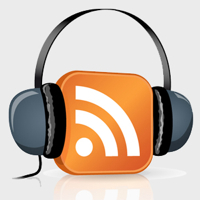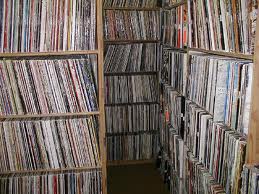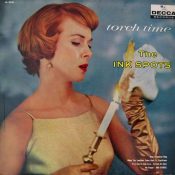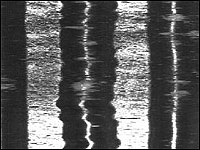 Podcasting changed my life.
Podcasting changed my life.
There, I said it. Melodramatic, but true. When free time is whittled down to razor-thin margins, something’s gotta give, and media consumption is often the first luxury to go. And, speaking for myself, when I’m tired at the end of the day and give myself an hour of couch time, I’m not exactly predisposed to turn to the news. “Man vs. Wild” is more like it.
The one chunk of time I get all to myself every day is the daily commute (by bike or walk+train), which amounts to just over an hour a day. A few years ago, commute time was music time, but podcasting changed all that.
With a weekly quota of five hours consumption time, didn’t take long to subscribe to more podcasts than I could possibly digest before the next week rolled around. But I continue to hone the subscription list. Here are some of the podcasts I’ve come to call friends:
Links are to related sites – search iTunes for these if podcast links aren’t obvious.
– This Week in Tech: Tech maven Leo Laporte used to do great shows at ZDTV, now runs his own tech news & info podcasting network. I appeared on his TV show a few times back in the BeOS days; now I’m just a faceless audience member. Show gets rambly and too conversational at times, but they do a good job of traversing the landscape, and there are plenty of hidden gems. Frequent co-host John Dvorak drives me crazy, despite his smarts.
– Podcacher: All about geocaching, with “Sonny and Sandy from sunny San Diego, CA.” Great production values. Love it when the adventures are huge, but get bored with all the geocoin talk (unfortunately fast-forwarding through casts and bicycling don’t go well together, especially since losing tactile control after moving to the iPhone). Still, lots of tips, excellent anecdotes, and occasional hardware reviews.
– Radiolab: I’ll go with their own description: “On Radio Lab, science meets culture and information sounds like music. Each episode of Radio Lab. is an investigation — a patchwork of people, sounds, stories and experiences centered around One Big Idea.” I love what they do with sonic landscapes. I can’t think of a better example of utilizing the podcasting medium’s unique characteristics. The shows are mesmerizing, and welcome relief from my tech-heavy audio diet.
– This American Life: Everyone’s favorite NPR show. Excruciatingly wonderful overload of detail on the bizarre lives or ordinary Americans. Your soul needs this show.
– Slate Magazine Daily Podcast: They say it would be a waste of the medium’s potential to just have someone read stories into a microphone. I beg to differ. I don’t have time to read Slate, but love their journalism. I’m more than stoked to receive a digest version of the site through my ear-holes.
– FLOSS Weekly: Another Leo Laporte show, but in this one he gets out of the way and lets his guests do the talking. All open source, all the time. Usually interviews with leaders / founders / spokespeople for various major OSS initiatives. Great interviews recently with players from the Drizzle and Django camps.
– Stack Overflow: Who woulda thunk a pair of Windows-centric web developers would have captured my attention? But great insight here into the innards of web application construction. Geeks only.
– NPR: All Songs Considered If you’re old-and-in-the-way like me, feeling like your musical soul isn’t get fed the way it should, you could do a lot worse than subscribe to All Songs Considered – annotated rundown of recent (and sometimes not-so-recent) discoveries that remind you why music is Still Worth Paying Attention To.
– This Week in Django: Part of the reason I’ve been so quiet lately is that I’m deeply immersed in Django training, having inherited a fairly complex Django site at work (more on that another day). This podcast is pretty hardcore stuff, for Django developers only. Can’t pretend to understand it all, but right now it’s part of the immersion process, and is helping me gain scope on the Django landscape.
– The WordPress Podcast: I spend more of my time (both at work and at home) tweaking on WordPress publication sites than anything else, and this is a great way to stay abreast of new plugins, security issues, techniques, etc. Wish it was more technical and had a faster pace, but it’s the best of the WordPress podcasts.
– Between the Lines: Back in my Ziff days, I worked for the amazing Dan Farber, who’s still going strong at ZD. This is my “check in with the veteran tech journalists” podcast, and is a serious distillation of goings-on in the tech world. Always a good listen.
Obviously there’s no way to fit all of these into the weekly commute hours, but I try. No time to digest more, but dying to know what podcasts have you gripped. Let me know.

 For anyone over 40 (or maybe 30), having a music collection probably means that, in addition to racks of CDs and ridiculous piles of MP3s, you’re also sitting on bookshelves (or “borrowed” milk crates) full of vinyl LPs. Hundreds of pounds of space-consuming, damage-prone vinyl. LPs were music you could touch, with glorious full-color 12″ album art, meandering liner notes, and the practical involvement of lowering needle to plastic. Long-playing records represent an era when music was less disposable – we actually sat down to listen, rather than treating music as a backdrop to the rest of life. Dragging a rock through vinyl was not some kind of nostalgic love affair with the past – it was just the way things were. The cost of admission was pops and scratches, warped discs, having to get up in the middle of an album to flip the disc, cleaning the grooves from time to time, and getting hernias every time you moved to a new apartment.
For anyone over 40 (or maybe 30), having a music collection probably means that, in addition to racks of CDs and ridiculous piles of MP3s, you’re also sitting on bookshelves (or “borrowed” milk crates) full of vinyl LPs. Hundreds of pounds of space-consuming, damage-prone vinyl. LPs were music you could touch, with glorious full-color 12″ album art, meandering liner notes, and the practical involvement of lowering needle to plastic. Long-playing records represent an era when music was less disposable – we actually sat down to listen, rather than treating music as a backdrop to the rest of life. Dragging a rock through vinyl was not some kind of nostalgic love affair with the past – it was just the way things were. The cost of admission was pops and scratches, warped discs, having to get up in the middle of an album to flip the disc, cleaning the grooves from time to time, and getting hernias every time you moved to a new apartment.

 Podcasting changed my life.
Podcasting changed my life.  Is a record not spun a record not played? Dragging a needle across old, brittle vinyl records or wax cylinders can damage them — not something you want to do with rare historical recordings. At the Library of Congress, researchers have
Is a record not spun a record not played? Dragging a needle across old, brittle vinyl records or wax cylinders can damage them — not something you want to do with rare historical recordings. At the Library of Congress, researchers have